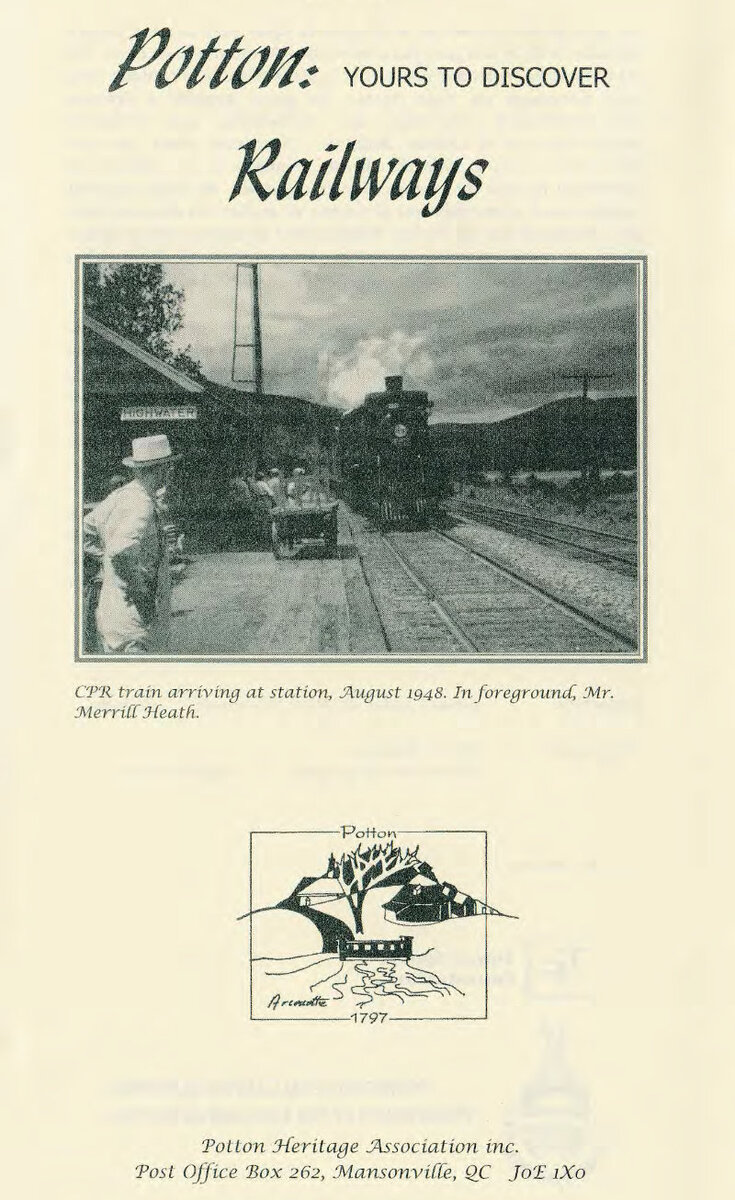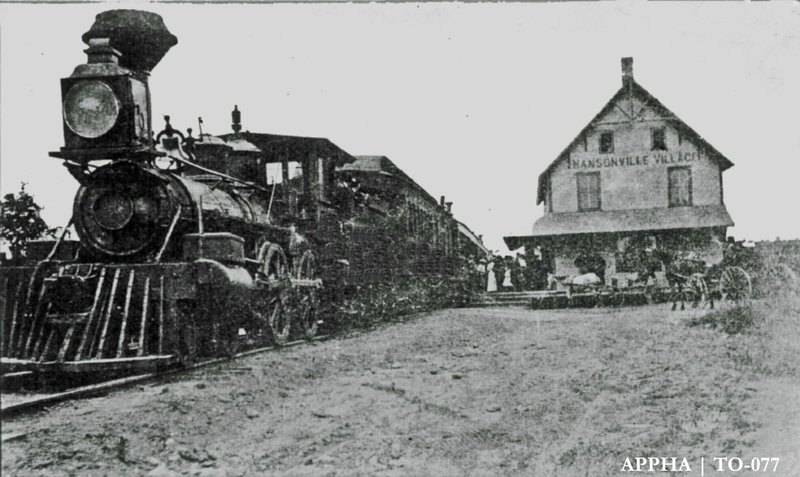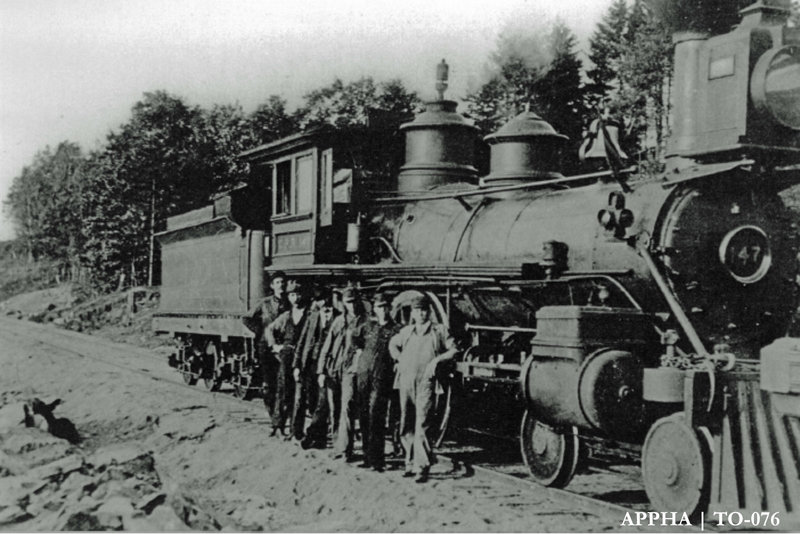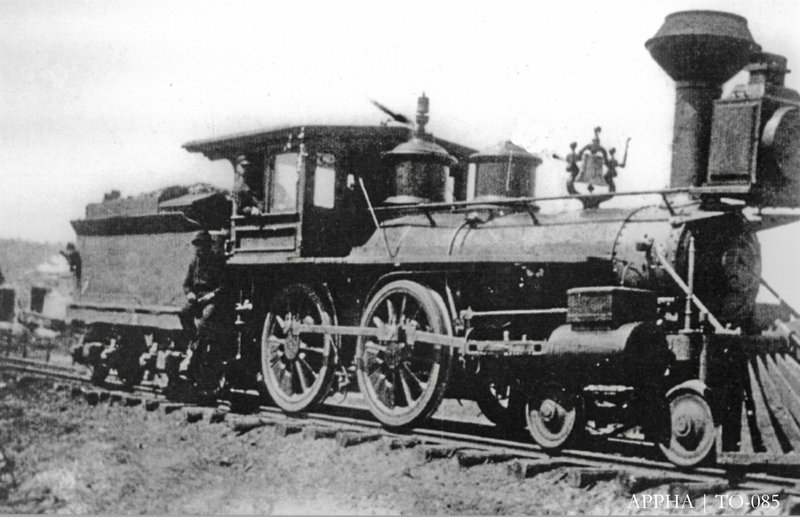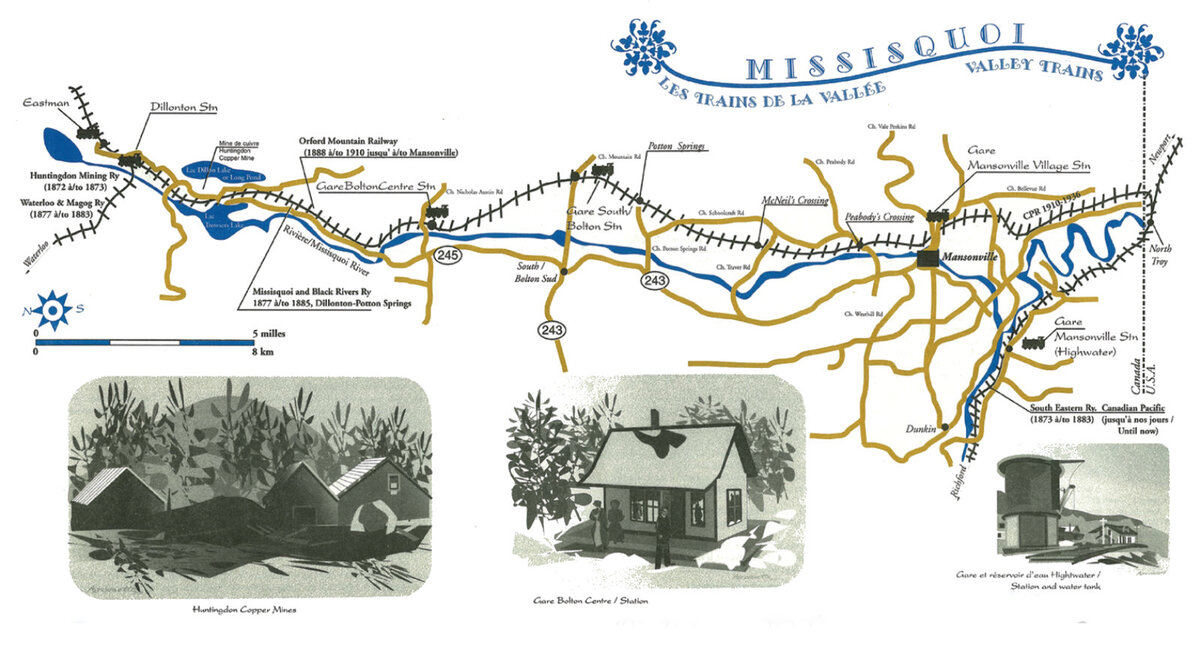Railways in the Missisquoi River Valley
Trains have always fascinated people and created close ties with the towns and villages they crossed.
There were great trains in history, the Orient Express in Europe, the Transcontinental in Canada but, here, we had the "Peanut Special" that serviced the Missisquoi Valley!
Several railway projects were on the drawing boards of many municipalities of the Eastern Townships, in the 1860s.
An important one was the South Eastern Railway which, after its promoters discarded a plan to build it through the Bolton Pass to Mansonville, opted for the West Farnham, Richford and Mansonville Station (Highwater) route to connect with the Connecticut and Passumpsic Railroad at Newport, Vt. Completed in 1873, this became Potton Township’s first railway.
With the South Eastern Railway in a precarious financial position, the Canadian Pacific, in 1883, assumed full control. During the 1990s, they sold this branch line to American interests.
Following the end of the American Civil War, the need for copper increased and, in 1870, the Huntingdon Mining Railway was inaugurated linking the Huntingdon copper mine at Dillonton, near Eastman, to Waterloo. The Vermont Central Railroad bought it in 1871. Also in 1870, Lucius Seth Huntingdon and Ralph Merry obtained a charter to build the Missisquoi and Black Rivers Valley Railway from Richmond, Que. to the Dillonton copper mine, where it joined the Waterloo to Magog railway.
By December 1877, the line had been extended through Bolton Centre to Potton Sulphur Springs, located at the northern limit of Potton Township. By this time, Potton Sulphur Springs had become famous for their therapeutic value, attracting visitors from many areas, and the Potton Springs Hotel had been built two years before. Falling upon hard times, the line progressed no further.
In 1888, Judge Samuel W. Foster formed a new company and renamed the line the Orford Mountain Railway. He extended it north to Windsor Mills, in 1903, and south to North Troy, in 1906. That year, a station was built in Mansonville and called Mansonville Village.
To honour Judge Foster, it was inaugurated with great pomp on Place Manson, on July 11, 1907.
In addition, there was a siding at Peabody Road, and the Willard shoe last factory was located nearby at Traver Road, then called McNeil’s Crossing. The cement fireplace of the factory still stands there, a silent witness of a past era.
At the Potton Springs stop, there was a sheltered platform to welcome hotel passengers.
Faced with rising financial difficulties, the railway was acquired by the Canadian Pacific Railway in 1910, who continued the line to North Troy, Vt. where it connected with their Montreal to Boston link, the former South Eastern Railway.
Purchase of the OMR as well as other small Eastern Townships rail lines by the Canadian Pacific was, if nothing else, an insurance policy against the Vermont Central encroaching on its territory.
Like its predecessor, the MBRV Railway, the O.M.R. was built to tap the copper ore and the valuable timber resources of the area as well as transporting hay to the New England states during World War I.
The “Peanut Special”, so called because of the small size of its locomotives, also ran four trains a day, including mixed freight and passenger cars, two in each direction between Windsor Mills and North Troy.
By the 1920s and early 30s, service had declined to the point where the Canadian Pacific Railway was forced to cease operations in 1936 and closed the line between North Troy and Eastman. The rails were removed soon after, ending an interesting period in the history of Potton Township.
Many local people still have fond memories of when the trains whistled their way through the Missisquoi Valley.
Today, one can still see the path of the old rail bed in the fields or in the woods, as well as the old Mansonville Village train station, now a private home on Bellevue Road.
Production team
Text: Peter Downman and Gérard Leduc
Graphic design: Pierre Nadeau, Estrie-Art Infographie
Original Edition: 2003
Web edition: Serge Normand, 2024
Web edition revision: Jacqueline Robitaille, 2025
